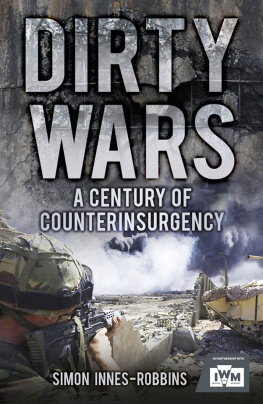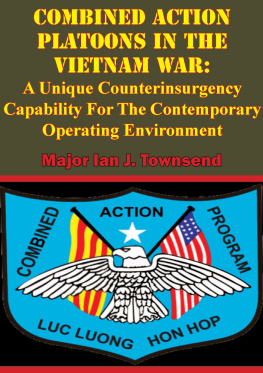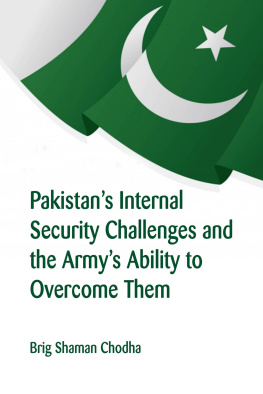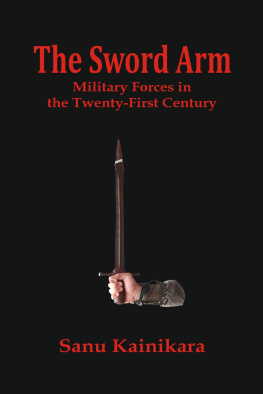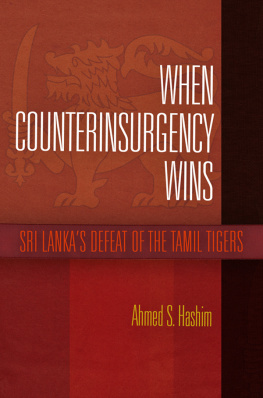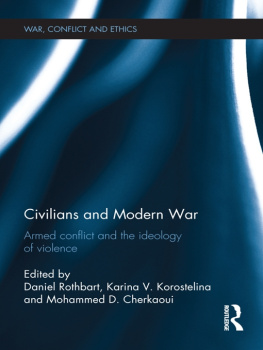Daniel L. Magruder - Counterinsurgency, Security Forces, and the Identification Problem: Distinguishing Friend From Foe
Here you can read online Daniel L. Magruder - Counterinsurgency, Security Forces, and the Identification Problem: Distinguishing Friend From Foe full text of the book (entire story) in english for free. Download pdf and epub, get meaning, cover and reviews about this ebook. year: 2017, publisher: Routledge, genre: Politics. Description of the work, (preface) as well as reviews are available. Best literature library LitArk.com created for fans of good reading and offers a wide selection of genres:
Romance novel
Science fiction
Adventure
Detective
Science
History
Home and family
Prose
Art
Politics
Computer
Non-fiction
Religion
Business
Children
Humor
Choose a favorite category and find really read worthwhile books. Enjoy immersion in the world of imagination, feel the emotions of the characters or learn something new for yourself, make an fascinating discovery.

- Book:Counterinsurgency, Security Forces, and the Identification Problem: Distinguishing Friend From Foe
- Author:
- Publisher:Routledge
- Genre:
- Year:2017
- Rating:5 / 5
- Favourites:Add to favourites
- Your mark:
Counterinsurgency, Security Forces, and the Identification Problem: Distinguishing Friend From Foe: summary, description and annotation
We offer to read an annotation, description, summary or preface (depends on what the author of the book "Counterinsurgency, Security Forces, and the Identification Problem: Distinguishing Friend From Foe" wrote himself). If you haven't found the necessary information about the book — write in the comments, we will try to find it.
This book presents a theory and empirical evidence for how security forces can identify militant suspects during counterinsurgency operations.
A major oversight on the part of academics and practitioners has been to ignore the critical antecedent issue common to persuasion and coercion counterinsurgency (COIN) approaches: distinguishing friend from foe. This book proposes that the behaviour of security forces influences the likelihood of militant identification during a COIN campaign, and argues that security forces must respect civilian safety in order to create a credible commitment to facilitate collaboration with a population. This distinction is important as conventional wisdom has wrongly assumed that the presence of security forces confers control over terrain or influence over a population. Collaboration between civilian and government actors is the key observable indicator of support in COIN. Paradoxically, this theory accounts for why and how increased risk to government forces in the short term actually improves civilian security in the long run. Counterinsurgency, Security Forces, and the Identification Problem draws on three case studies: the Huk Rebellion in the Philippines post-World War II; Marines Corps experiences in Vietnam through the Combined Action Program; and Special Operations activities in Iraq after 2003. For military practitioners, the work illustrates the critical precursor to establishing security during counterinsurgency operations. The book also examines the role and limits of modern technology in solving the identification problem.
This book will be of interest to students of counterinsurgency, military history, strategic studies, US foreign policy, and security studies in general.
Daniel L. Magruder: author's other books
Who wrote Counterinsurgency, Security Forces, and the Identification Problem: Distinguishing Friend From Foe? Find out the surname, the name of the author of the book and a list of all author's works by series.

